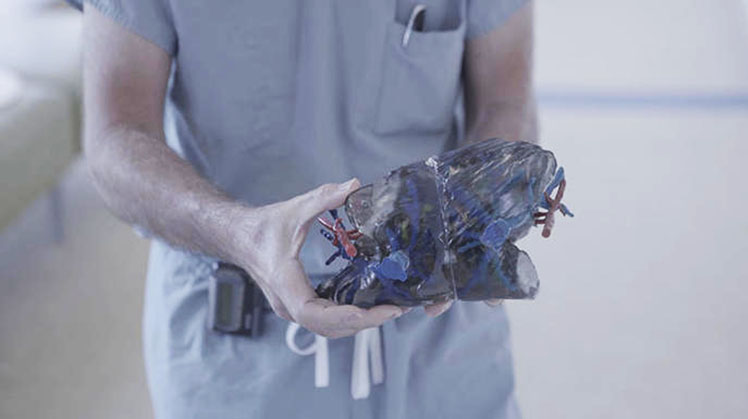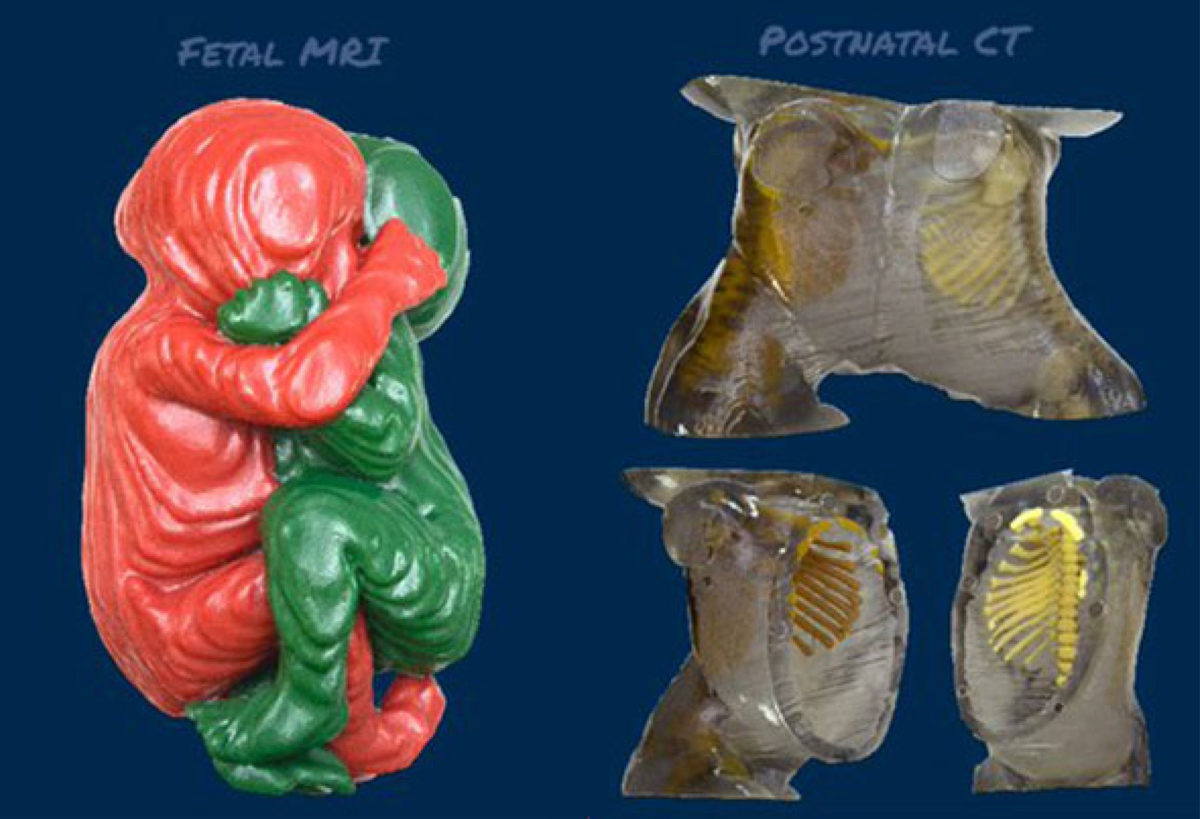U-M Radiologists provided preoperative imaging and worked with UM bioengineers to design lifelike, 3D printed models that helped plan the necessary steps in this difficult surgery. The models were printed using the Stratasys J750™ 3D printer in the Duderstadt Center Fabrication Studio, supported by the studio’s professional staff.
From a Press Release by Michigan Health:
MICHIGAN MEDICINE TEAM SEPARATES CONJOINED TWINS AT C.S. MOTT
CHILDREN’S HOSPITAL
Beata Mostafavi – September 18, 2020

Radiologists worked with UM bioengineers to design lifelike, 3D printed models of the girls’ livers and body structures to plan for surgery. Image by Joe Hallisy, courtesy of Michigan Health News
1 year-old sisters born attached at the chest and abdomen undergo complex 11-hour surgery involving more than two dozen specialists and the aid of 3D printed models.
Sarabeth and Amelia Irwin spent the first 13 months of their lives inseparable: they’d never slept in their own beds, played in different rooms or ever been held alone.
But that world dramatically changed after doctors at Michigan Medicine C.S. Mott Children’s Hospital successfully separated the one-year-old conjoined twins who were connected from their chests to belly buttons. See the videos and read the entire story here
